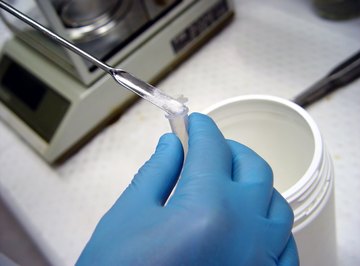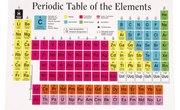
It's all about the units. Understanding the difference between molecular weight and molar mass all comes down to a difference of what is being counted and the units.
Molecular weight is the mass of a molecule of a substance. It can also be called molecular mass. The units for molecular weight are atomic mass units (amu).
Molar mass is the mass of one mole of a substance. Molar mass is reported in grams per mole or g/mol.
What Is the Difference Between a Molecule and a Mole?
A molecule is the smallest particle in an element or compound that still possesses the traits of that molecule or compound. For example, CO2 or carbon dioxide is a compound. The smallest particle of carbon dioxide is a single molecule of CO2. If you tried to split it up further into the elements involved in CO2, it wouldn't be CO2 anymore.
A mole (mol) is just a number. Specifically, that number is 6.022x1023, which is also known as Avogadro's number. A mol of CO2 is thus 6.022x1023 molecules of CO2. A mol, however, doesn't have to refer to molecules. As stated previously, it is just a number. That means if you see a mol of flamingos (the animal) there are 6.022x1023 flamingos. It doesn't matter what you are measuring.
In other words, a mol is just a convenient way of saying 6.022x1023in the same was that a dozen is a convenient way of saying twelve.
How Do You Calculate Molecular Weight?
First, you will need the mass of individual compounds. This number is found under the element on the period table. For example, the molecular weight of oxygen is 16.00 amu.
Once you know the mass of the individual components of a compound, you can find the molecular weight.
For example, the molecular weight of water (H2O) is:
The mass of hydrogen is 1.008 amu, and the mass of oxygen is 16.00 amu. Plugging that in yields:
Adding the molecular weights of each element together gives:
Thus, the molecular weight of water is 18.02 amu.
How Do You Calculate the Molar Mass of a Substance?
Now that you already know how to calculate the molecular weight, calculating the molar mass is easy. Why? Once you know the molecular weight, you also know the molar mass.
The molecular weight of sodium is 22.99 amu. The molar mass of sodium is 22.99 grams per mol (g/mol). It's that simple!
So then how do you calculate the molar mass of water?
You need to know the molar mass of the elements that make up water. The molar mass of hydrogen is 1.008 g/mol as given by the period table. The molar mass of oxygen is 16.00 g/mol. So:
Remember, you have to account for the two parts of hydrogen per oxygen so that's why there is a two in front of the molar mass of oxygen. Plugging in the molar mass of each element gives:
Which becomes:
The molar mass of water is 18.02 g/mol. You'll note that this is the same number you got for the molecular weight, but the units are different.
Tips
Molecular weight is the mass of one molecule of a compound, while molar mass is the mass of one mole of a compound.
Resources
About the Author
Riti Gupta holds a Honors Bachelors degree in Biochemistry from the University of Oregon and a PhD in biology from Johns Hopkins University. She has an interest in astrobiology and manned spaceflight. She has over 10 years of biology research experience in academia. She currently teaches classes in biochemistry, biology, biophysics, astrobiology, as well as high school AP Biology and Chemistry test prep.
